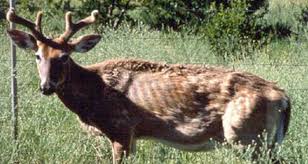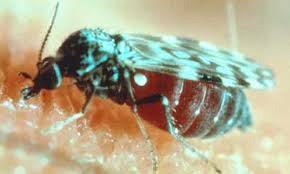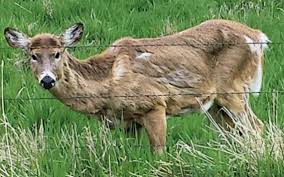
(UNDATED) – According to the Indiana Department of Natural Resources, there have been several reports of a deadly virus impacting the white-tail deer population in Indiana.

The disease epizootic hemorrhagic disease (EHD) is transmitted through biting midges or gnats. These breed and live in small pools of standing water, pools even as small as a hoofprint filled with water.

The clinical signs or symptoms seen in deer typically show up about seven days after a deer has been infected with the virus. These signs can include not eating, weakness, loss of fear of humans, circling, and other neurological signs. Deer that have died from EHD may have a swollen tongue, eyelids, neck, or head. The disease is often fatal, but some deer will survive and develop immunity.

Hot, dry weather with little rain, often characterized by prolonged summer-like conditions extending into the fall, may increase the occurrence and duration of an EHD outbreak. Usual water sources become scarce, deer gather around these water sources and may become exposed to infected biting midges, which spread the disease between deer via bites from the insects. Large deer populations can further exacerbate an outbreak as more deer frequent these watering holes.
EHD can only be diagnosed by a qualified laboratory using blood and internal tissues such as spleen and lung.
After the insect population is reduced by cold weather in the fall, the spread of the disease is reduced. Therefore, one should expect new infections to stop shortly after the first hard freeze in the fall.
There is no treatment for EHD once the animal shows symptoms. There are no preventive methods that are currently being applied to wild populations of deer. According to Infectious Diseases of Wild Mammals (2001), there is no established public health risk associated with handling or eating infected animals or with exposure to infected midges.
During the hunting season, if you find a deer that has similar grooves in all its hooves, the animal may have survived EHD infection. The grooves are a result of the deer having had a high fever and is similar to the groove in a fingernail when it grows out after being hit. Such a deer is safe to handle and eat.
Indiana DNR’s primary method for monitoring EHD outbreaks is through reports of individuals who suspect a sick or dead deer. These reports are collected through DNR’s sick and dead deer reporting form. When possible, fresh dead deer may be sampled for testing by trained staff. Once a county is confirmed to have EHD, Indiana DNR uses the online reporting to monitor the spread and extent of the disease. DNR staff also maintain contact with counterparts in surrounding states to monitor the EHD status more broadly.
Suspected Cases as off Sept. 10
- Brown County – 12
- Daviess County – 2
- Dubois County – 10
- Greene County – 23
- Jackson County – 6
- Lawrence County – 2
- Martin County – 7
- Monroe County – 2
- Orange County – 3
- Scott County – 18
- Washington County – 24
Confirmed Cases
- Clay County – 1
- Harrison County – 1
- Hendricks County – 1
- Owen County – 1
- Parke County – 2
- Perry County – 2
- Vigo County – 1
Totals
- Confirmed cases – 10
- Deer reported – 600
- Deer dead – 418
- Sick – 115
- Health – 67
- Tested – 50



